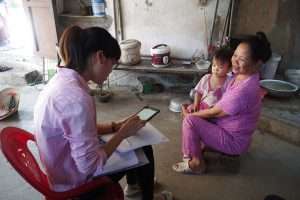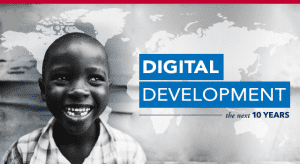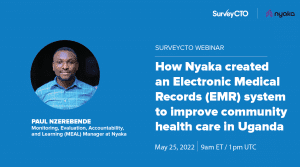We recently had the pleasure of speaking with researchers at Mekong Development Research Institute (MDRI), a scientific research agency in the Mekong region and longtime SurveyCTO user. MDRI partners with a wide range of international and domestic clients, including the Asian Development Bank, International Labor Organization, United Nations Development Programme, and many others on projects spanning survey management, evaluation, M&E, and applied research.
The interview below is a condensed version of our conversation with Vu Vuong, Son Nghiem, Long Nguyen, Chau Le, and Bao Ho.
Tell us about the research projects you have been working on this past year.
 Our projects typically focus on one of the following issue areas: poverty reduction, ethnic minorities, agriculture and rural development, labor and immigration, water and sanitation, education, environment and climate change, trade, or governance. Key projects last year included:
Our projects typically focus on one of the following issue areas: poverty reduction, ethnic minorities, agriculture and rural development, labor and immigration, water and sanitation, education, environment and climate change, trade, or governance. Key projects last year included:
- The Vietnam Public Opinion Survey 2016 for the Australian Embassy, which covered 5000 respondents from 10 provinces in Vietnam
- The Women Empowerment in Agriculture Index (WEAI) Baseline Survey for SNV and funded by the Dutch Government, wherein we conducted interviews with 770 households from four provinces in Vietnam
- An independent evaluation of the Vietnam Escuela Nueva project, which covered 651 primary schools with around 30,000 respondents
Tell us more about the WEAI Baseline Survey.
 The WEAI baseline survey is part of the “Enhancing Opportunities for Women’s Enterprises” (EOWE) Programme. The five-year program is being implemented in Kenya and Vietnam, and focuses on advancing women’s economic participation.
The WEAI baseline survey is part of the “Enhancing Opportunities for Women’s Enterprises” (EOWE) Programme. The five-year program is being implemented in Kenya and Vietnam, and focuses on advancing women’s economic participation.
The daily routine part of the WEAI survey was one of the most difficult e-questionnaires that we had implemented at that time and before that, some of our clients failed to build it on other platforms. Using SurveyCTO, we successfully constructed a working form with correctly functioning constraints. Of course, we needed the SurveyCTO team’s great support (especially from Faizan and Chris). We were grateful that the team responded so quickly and were straight-to-the-point, helping us to achieve our project’s objectives on time.
We also used complex constraint functions incorporated into the survey forms to detect and verify outliers on a real-time basis.
What are the innovative ways in which you have used SurveyCTO?
We were doing an interesting project with the Fred Hollows Foundation to understand Knowledge, Attitude and Practices (KAP) of school eye care. As a part of this project, we did a baseline and endline study which involved collecting data from 26 primary and secondary schools in three provinces, joining a sample size of around 3000 students participating in visual acuity assessments and 1040 pairs of students and parents appearing for quantitative interviews. SurveyCTO was used to input the visual acuity assessment results from teachers as well as interview respondents.
Any advice for other users?
Our partner clients are often interested in seeing the data in real-time and we are easily able to implement this through SurveyCTO’s data publishing features, which allow us to publish data directly into Google Sheets. We also use the case management and pre-loading data features, which are very helpful.
Photos courtesy of MDRI





